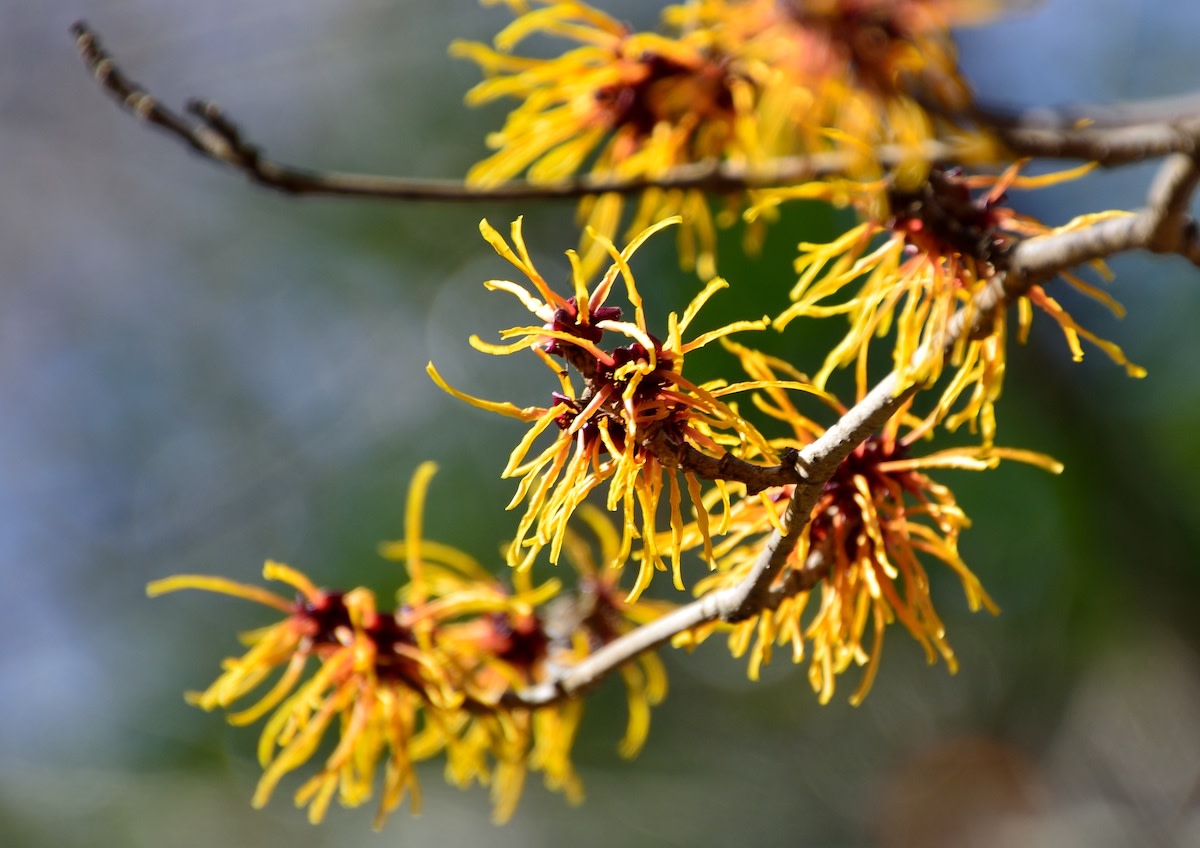Witch Hazel Plant Guide: How to Grow Witch Hazel
Written by MasterClass
Last updated: Jun 11, 2021 • 3 min read
Witch hazels are deciduous understory trees that are grown for medicinal purposes and as colorful winter garden plants.
Learn From the Best
What Is Witch Hazel?
Witch hazel (Hamamelis) is a genus of deciduous shrubs whose extract is often used as an astringent. Witch hazel shrubs are native plants in North America, Japan, and China, producing fragrant flowers that bloom from late fall to late winter.
Most species of witch hazel produce flowers in warmer hues: usually yellows, and sometimes pinks and reds. The ribbon-like blooms are tolerant of the cold, making them colorful additions to winter gardens when all other trees are bare.
5 Varieties of Witch Hazel
Witch hazel plants are hardy shrubs that bloom yellow, red, or orange flowers in late winter and early spring. Popular varieties of witch hazel plants include:
- 1. Common witch hazel (Hamamelis virginiana): H. virginiana is the most prolific of North American witch hazels, scattered from Nova Scotia down to Florida and Texas. Hamamelis virginiana can grow up to 20 feet tall, and its bark extract is frequently used in remedies.
- 2. Chinese witch hazel (Hamamelis mollis): Chinese witch hazel is native to central and eastern China, and it blossoms fragrant flowers—yellow flowers in the late winter and a fainter flower in its late fall foliage.
- 3. Japanese witch hazel (Hamamelis japonica): This deciduous shrub produces bright yellow flowers and green leaves. Hamamelis japonica (alongside H. mollis) is a parent of the hybrid Hamamelis x intermedia, a prized garden plant. 'Diane', one cultivar of Hamamelis x intermedia, won the Royal Horticultural Society's Award of Garden Merit.
- 4. Big-leaf witch hazel (Hamamelis ovalis): Hamamelis ovalis features larger leaves, garnering it the nickname big-leaf witch hazel. This North American witch hazel, found in the Southeast, has red flowers.
- 5. Ozark witch hazel (Hamamelis vernalis): Another American witch hazel, H. vernalis is found throughout Missouri and Arkansas, giving it the nickname Ozark witch hazel. Hamamelis vernalis have winter blooms of yellow and red flowers.
How to Grow Witch Hazel
Witch hazel plants are popular gardening options that add color and fragrance to winter landscaping.
- 1. Root your witch hazel. The plant can be grown in pots, but over time (and as it grows), it will need to be rooted in the ground.
- 2. Plant witch hazel in acidic, well-draining soil. These low-maintenance plants flourish in USDA hardiness zones 3 through 9 and are tolerant of acidic soil.
- 3. Water witch hazel plants in the summer. Witch hazel plants are sensitive to drought, so be sure to keep the soil moist with regular watering in hotter months.
- 4. Place witch hazel plants in direct sunlight. Too much shade will lead to duller flowers and leggy growth, so witch hazel grows best in full sun or sometimes in partial shade.
- 5. Grow witch hazel in cooler winter temperatures. Witch hazel requires a winter chill in the milder months to enable full flowering in late winter.
- 6. Protect your plant with fencing. Witch hazel plants are resistant to most pests and diseases. Fencing can prevent roaming deer from eating the leaves.
How to Care for Witch Hazel
Witch hazel is relatively easy to tend to, but follow these tips to keep your plant healthy:
- Give witch hazel space in your garden. If you add other plants to your garden, make sure that they do not block the witch hazel’s sunlight.
- Add mulch to your plants for water retention. Mulching around witch hazel can help retain water and let your plant grow in moist soil.
- Prune your witch hazel to keep its shape. These large shrubs can grow over 20 feet tall, so you will need to prune them to maintain shape and remove dead branches. When you prune your witch hazel, do so before summer hits so the following year’s buds can develop. Also, prune suckering twigs at the base so as not to impede the plant’s growth.
Uses for Witch Hazel
For centuries witch hazel has been cultivated for its medicinal qualities. Witch hazel extract is often used as an astringent and balm for rashes, eczema, razor burn, poison ivy, and insect bites. Witch hazel is easy to find at pharmacies in a clear liquid extract.
Safety Tips for Using Witch Hazel Extract
Distilled witch hazel contains natural oils but it also contains ethanol. Because of the alcohol content, you’ll want to keep it away from open flames. If witch hazel gets into your eyes, remove your contact lenses if you’re wearing any, and flush your eyes with cool water for several minutes, blinking throughout. Witch hazel can be harmful if consumed, so keep it out of children’s reach. Tightly seal the lid of witch hazel extract and store it in a cool, safe place.
Learn More
Grow your own garden with Ron Finley, the self-described "Gangster Gardener." Get the MasterClass Annual Membership and learn how to cultivate fresh herbs and vegetables, keep your house plants alive, and use compost to make your community—and the world—a better place.
